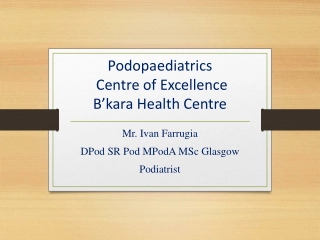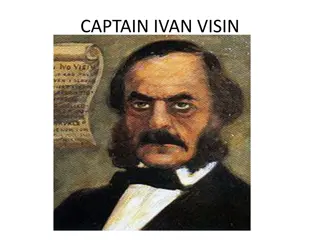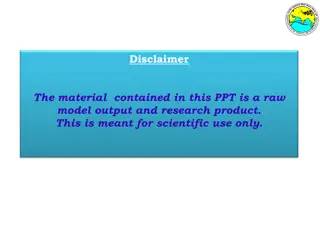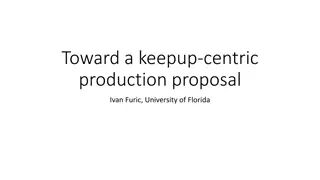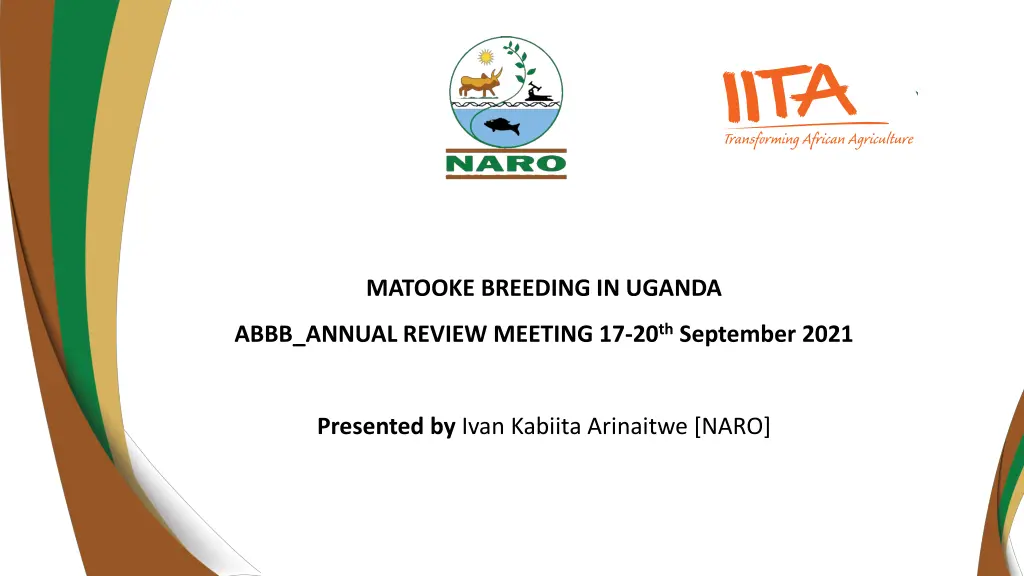
Matooke Breeding in Uganda: Annual Review Meeting Highlights
Explore the components of Matooke breeding in Uganda, challenges faced by NARO, improvements in product profiles, and advancements in seed set techniques. Learn about the latest developments and future prospects in Matooke breeding for enhanced productivity and quality.
Download Presentation

Please find below an Image/Link to download the presentation.
The content on the website is provided AS IS for your information and personal use only. It may not be sold, licensed, or shared on other websites without obtaining consent from the author. If you encounter any issues during the download, it is possible that the publisher has removed the file from their server.
You are allowed to download the files provided on this website for personal or commercial use, subject to the condition that they are used lawfully. All files are the property of their respective owners.
The content on the website is provided AS IS for your information and personal use only. It may not be sold, licensed, or shared on other websites without obtaining consent from the author.
E N D
Presentation Transcript
MATOOKE BREEDING IN UGANDA ABBB_ANNUAL REVIEW MEETING 17-20thSeptember 2021 Presented by Ivan Kabiita Arinaitwe [NARO]
Components of Matooke breeding Parent improvement Diploids, Triploids, Tetraploids Variety development 3x X 2x and 4x X 2x Evaluation trials [EETs, PYTs, AYT/On-farm] Data Management Field book, BTracT, MusaBase
BTracT crosses and seed set Accelerated Btract is now fully functional at NARO enabling digital data capture However, NARO has experienced a series of system failure since December 2020 that has affected data colleaction Challenges at NARO:
Product profiles Product profile to be improved by stake holder consultative meetings Precise product profile as opposed to current all traits product profile Traits need to be clearly defined by adding thresholds for each trait Product profile for matooke hybrid developed for Uganda Design a selection profile for advancement of materials from different evaluations stages-NARO lead Contains minimum requirements for advancement of hybrids from EET to PYT and from PYT to advanced yield trials Two parent profiles: Improved diploid and tetraploid developed by NARO: Consultative meetings with stake holders to be held Parent profiles realigned to fit or serve the product profile The product profile of matooke hybrid and parent profiles to be shared with NSIP for further discussion and update Selection for advancement of hybrids is now guided by product and selection profiles. This will improve the quality of advanced trials and help in product replacement Accelerated>>>
Improving seed set A field experiment to determine the percentage embryo survival after embryo rescue per fruit development / ripeness stage was established in 2020 and now plants are at a vegetative stage-(NARO) What next: Defining of the fruit development/ripeness Optimal fruit development/ripeness stage identified for maximal embryo germination 5 matooke derived diploids at the second stage of treatment for chromosome doubling with Oryzalin at subculture level 2 in TC lab at Kawanda Product of 3x X 2X, Fruit filling , Resistance to black Sigatoka Chromosome doubled Matooke derived diploids for use in Matoke breeding program generated. 72 4x and 2x parents for screening 24 genotypes were sent to Stellenbosch, 42 genotypes were sent to Tanzania for fusarium and nematode screening, 23 genotypes have been weaned at Sendusu and are ready for Black Sigatoka screening. Determining the breeding value of parents Knowledge of the Optimal fruit development/ripeness stage for maximal embryo germination and breeding value of parents >>> Will accelerate targeted crossing Started applying pollen germination media (PGM)-(IITA) Accelerated>>>
Evaluation trials and selections NARO Established: An EET July 2020 with 815 genotypes at flowering An EET November 2020 with 392 genotypes An EET January 2021 with 392 genotypes 43 matoke hybrids selected from previous EETs, under multiplication in the Tissue culture lab at NARO. 450 genotypes were planted in EETs in November 2020 and April 2021 at IITA At IITA: 8 promising hybrids selected for advancement to PYT Early evaluation trials (EETs) Sensory evaluation has been carried out on 6 hybrids out of 43 hybrids from NARO. 3 out of 6 hybrids have sensory score above 3.5 From IITA, Sensory evaluation of materials in EETs done for 6 out of 8 selected genotypes. 3 hybrids have sensory score above 3.5 Sensory evaluation at EETs cut off 3.5/5.0 EET traits harmonized and uploaded in musabase. Accelerate selection at EET Sensory evaluation at EET level will improve the quality of PYTs Started sorting EET plants according to ploidy level before planting-(IITA) No ploidy Machine at NARO Accelerated
Evaluation trials and selections Joint PYT 1 48 Candidate varieties with 17 kg and above identified from Joint PYT 1 basing on data from two sites (Hoima and Mbarara) Sensory evaluation to identify hybrids with sensory acceptability score ( 3.5) to advance to AYT. Successfully harvested, cycle 2 and 3. Hoima genotypes are at 50% flowering NARL-Kawanda 30% flowering and Mbarara at 25% flowering Sensory evaluation to be conducted when bunches are ready for harvest Joint PYT2 PYT traits harmonized and uploaded in musabase. Accelerate selection at PYT Inoculation of PYT: Have hybrids fitting in the next product profile 2.5 Yrs: Selection at cycle 2: From previous 4 yrs Accelerated
Evaluation trials and selections NARITA 17,22,24,4,18, two released hybrids (NAROBan 4 and NAROBan 5) and a local check (Mbwazirume) weaned at Kawanda. Sites: 4 regions (Western Uganda , Mid western Uganda (Albertaine region), Central Uganda and Eastern Uganda) On farm evaluation of Five NARITA hybrids in Uganda 4 farms per region 4 Replication per site 5 copies/per genotype/Rep 320 copies of each genotype (5*4*4*4) Involve inspectors from the Ministry to be in line with requirements for release (DUS) DUS data collection Selection at 1.5 Yrs: Sucker to sucker: From previous 3 yrs Involvement inspectors from the Ministry to be in line with requirements for release (DUS) to first track release Accelerated
Breeding for the region NAROBan1, 2, 3, 4 and 5 sent to Tanzania for DUS studies and release Virus indexed for Banana Bunchy Top Virus (BBTV) and Banana Streak Virus (BSV) Develop product profile for Tanzania Seed systems component Accelerated Country specific product profiles
Joint PYT1 at Bulindi ZARDI Matooke breeding team @NARO and IITA make Joint selection of genotypes from EET @ Sendusu

